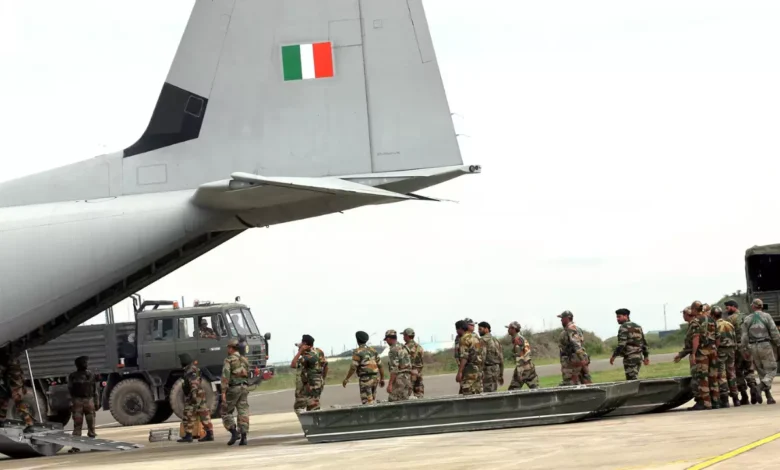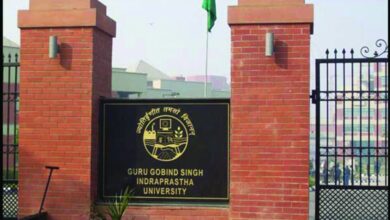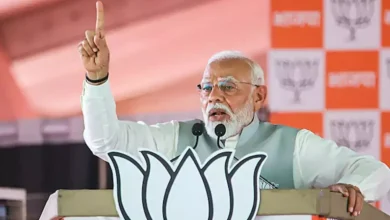IAF’s airlift operations transported 68,000 troops to Ladakh during 2020 Galwan Valley Clashes
Following the 2020 Galwan clashes, the IAF successfully transported numerous divisions of the Indian Army, encompassing over 68,000 troops, in addition to more than 90 tanks, radar systems, artillery weaponry, and various other equipment through airlift operations.

Following the deadly clashes of IAF’s airlift in the Galwan Valley, top sources within the defence and security establishment have revealed that the Indian Air Force swiftly transported over 68,000 Army soldiers along with approximately 90 tanks and various other weapon systems to eastern Ladakh from different parts of the country. This rapid deployment was strategically orchestrated along the Line of Actual Control (LAC).
In the aftermath of the clashes on June 15, 2020, which marked one of the most significant military confrontations between the two sides in decades, the Indian Air Force (IAF ) engaged its Su-30 MKI and Jaguar jets to conduct continuous surveillance and gather intelligence on the enemy’s strategic build-up. Additionally, several squadrons of combat aircraft were strategically positioned in an “offensive posturing” as a response to the situation, according to sources familiar with defence and security matters.
Utilizing the transport fleet of the Indian Air Force (IAF), the troops and weaponry were expeditiously transported within a remarkably brief timeframe. This swift mobilization was orchestrated for rapid deployment across challenging terrains along the Line of Actual Control (LAC) through a specialized operation. Sources emphasized the enhanced strategic airlift capability of the IAF, underscoring its growth over the years.
In swift response, the Indian Air Force (IAF) expedited the augmentation of its air defense capabilities and combat readiness. This was achieved through the deployment of diverse radar systems and the positioning of an array of surface-to-air guided weaponry at frontline bases along the Line of Actual Control (LAC) in the designated region, as revealed by sources. The overarching strategy encompassed reinforcing the military stance, upholding a credible force presence, and vigilantly observing the adversary’s strategic buildup. These measures were aimed at ensuring a proactive approach to manage potential scenarios, reflecting India’s comprehensive strategy.
Operating under exceptionally challenging conditions, the platforms of the Indian Air Force (IAF) successfully achieved all of their designated mission objectives, a source stated, refraining from divulging additional specifics.
As per another source, the comprehensive operation showcased the Indian Air Force’s expanding airlift prowess in contrast to its capabilities during ‘Operation Parakram.’ Notably, ‘Operation Parakram’ was initiated by India in response to the terrorist attack on Parliament in December 2001, during which a substantial troop deployment was organized along the Line of Control. In the wake of the eastern Ladakh standoff, the government has been actively prioritizing infrastructure advancement along the extensive 3,500 km-long Line of Actual Control (LAC).
Efforts to bolster the comprehensive infrastructure at the Nyoma Advanced Landing Ground (ALG) in eastern Ladakh have been set in motion by the defense ministry. This endeavor aims to facilitate the operational capacity of a diverse range of military aircraft. Concurrently, the Army has implemented a series of strategic measures following the Galwan Valley clashes to amplify its combat capabilities.
In Arunachal Pradesh, the Army has significantly bolstered its units with a considerable fleet of all-terrain vehicles sourced from the United States, 7.62MM Negev Light Machine Guns obtained from Israel, and a diverse array of other potent weaponry.
The relationship between India and China experienced a sharp decline following the intense clash in the Galwan Valley. Presently, both sides have stationed approximately 50,000 to 60,000 troops each along the Line of Actual Control (LAC) in that area. A new round of high-level military discussions is slated for Monday. During these talks, India is expected to emphasize the prompt withdrawal of troops from the remaining points of contention.
During a meeting of the five-nation BRICS grouping in Johannesburg on July 24, National Security Advisor Ajit Doval held discussions with Wang Yi, a prominent Chinese diplomat.
According to a statement by the Ministry of External Affairs regarding the meeting, National Security Advisor Ajit Doval conveyed that the situation along the Line of Actual Control (LAC) in the western sector of the India-China boundary since 2020 had led to a deterioration in “strategic trust” and undermined the public and political foundation of the relationship.
The statement noted that the NSA underscored the vital importance of ongoing efforts to comprehensively resolve the situation and reinstate tranquility and harmony in the border regions. This, in turn, would eliminate obstacles to normalcy in bilateral relations. The standoff in eastern Ladakh along the border emerged on May 5, 2020, subsequent to a violent clash in the Pangong Lake area.
Also, have a look at: 80-year-old man cycles 4,500 km from Kerala to Ladakh to celebrate his ‘birthday’



